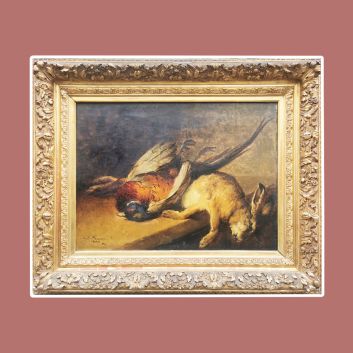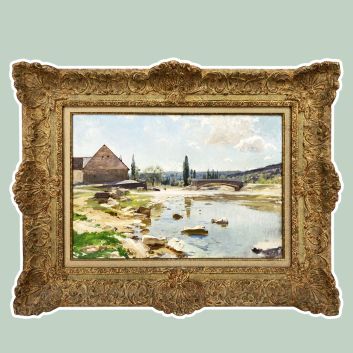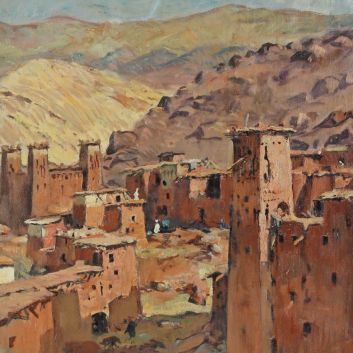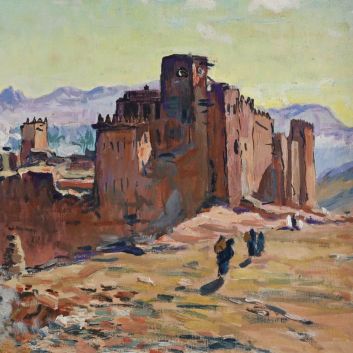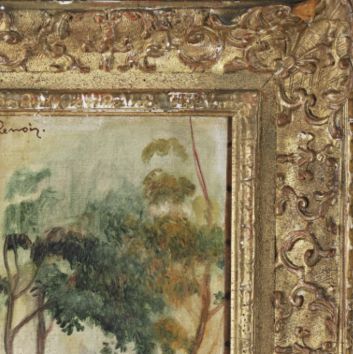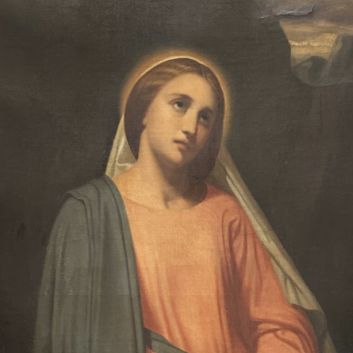The value of Hyppolite Lazerges' paintings
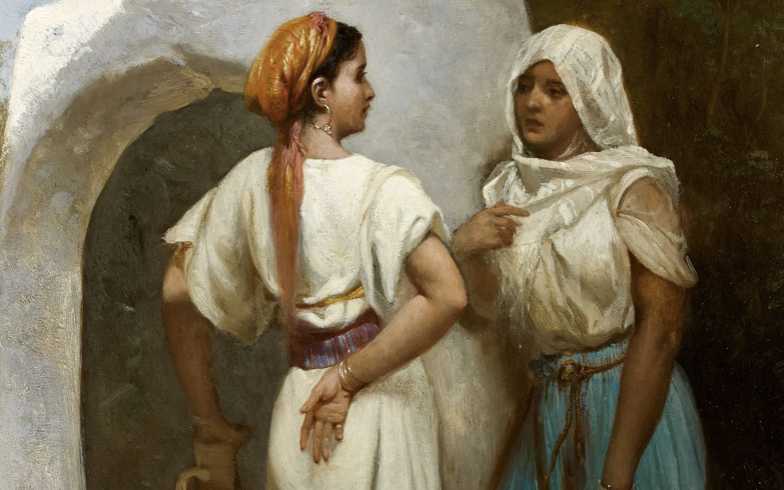
If you own a work by or after Hippolyte Lazerges, and would like to know its value, our state-approved experts and auctioneers will be happy to offer you their appraisal services.
Our specialists will carry out a free appraisal of your work, and provide you with a precise estimate of its current market value.
Then, if you want to sell your work, we'll point you in the right direction to get the best possible price for it.
Rating and value of the artist Hippolyte Lazerges
Artist Hippolyte Lazerges left behind a highly distinctive body of work, categorized as Orientalist. He is also steeped in Romanticism. He studied at the Ecole Supérieure des Beaux-Arts in Paris.
Prices for his works are now rising under the auctioneer's hammer. His paintings are particularly prized, especially by French and English buyers. The price at which they sell on the art market ranges from €20 to €74,700, a considerable difference, but one that says a lot about the value that can be attributed to Lazerges' works.
In 2022, a predominantly blue oil on canvas sold for €22,400 against an estimate of €9,500-14,100.
Response in less than 24h
Order of value from simplest to most prestigious work
Technical | Estimate |
|---|---|
Pencil | From €20 to €5700 |
Watercolor | From €25 to €2350 |
Oil painting (on canvas) | From €37 to €74,700 |
Style and technique of artist Hippolyte Lazerges
Hippolyte Lazerges deploys an art where the rigor of drawing and the subtlety of color combine to reveal the intensity of a look, the softness of a light or the richness of a setting.
Heir to the academic tradition, he pays meticulous attention to volume and balance in his compositions, while infusing his work with an oriental sensibility.
His portraits, with their refined realism, reflect an almost intimate approach to the model, where expression and posture reveal a profound humanity.
In his genre scenes, he excels at capturing movement and suspended moments, giving his compositions a poignant authenticity.
His landscapes, inspired by the enchanting scenery of Algeria, oscillate between a faithful rendering and a poetic evocation of luminous atmospheres.
Lazerges gives pride of place to the interplay of light, shaping shapes and sculpting faces with subtle precision.
He works with the contrasts between deep shadows and diffuse light, giving his canvases a singular vibrancy, where the pictorial material seems animated by a breath of its own.
His supple, controlled touch, far from any academic rigidity, lends his works a measured spontaneity, where emotion shines through in the delicacy of the strokes and the richness of the nuances.
A painter of the intimate and the distant, he composes a universe where technical refinement always serves expressivity, testifying to a profoundly sensitive vision of the world around him.
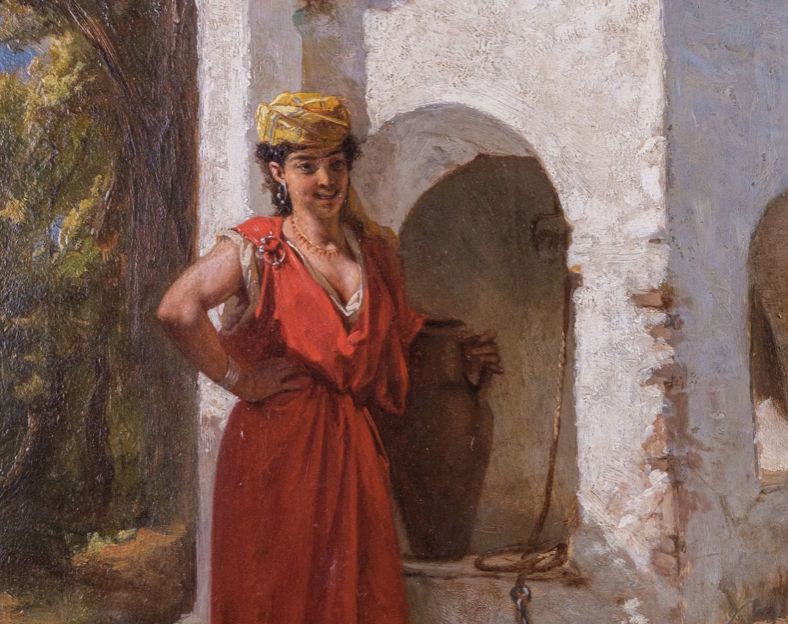
The life of Hippolyte Lazerges
French artist Hippolyte Lazerges (1817-1887) remains a little-known figure, but his work deserves to be rediscovered. Born in France, he spent a large part of his childhood in Algeria, a country whose imprint he retained throughout his career.
Recalled to France for his military service, he took the opportunity to enter the Beaux-Arts, where he trained with François Bouchot and David d'Angers.
Left to his own devices and without family support, he endured difficult years, making a living from official commissions for the State and religious decorations for churches and cathedrals.
Later, he returned to Algeria, where he fully embraced Orientalism. His portraits, genre scenes and landscapes capture the atmosphere and light of Algiers.
His canvases bear witness to a careful observation of everyday life and a sincere attachment to his subject, far removed from the idealized visions of some of his contemporaries.
Lazerges does not limit himself to painting. As an essayist, he published several treatises on art and reflected on the issues of representation.
He also composed a number of musical works, now forgotten. A complete artist, he left a discrete body of work marked by a double anchorage: that of the academic tradition and the attraction of elsewhere.
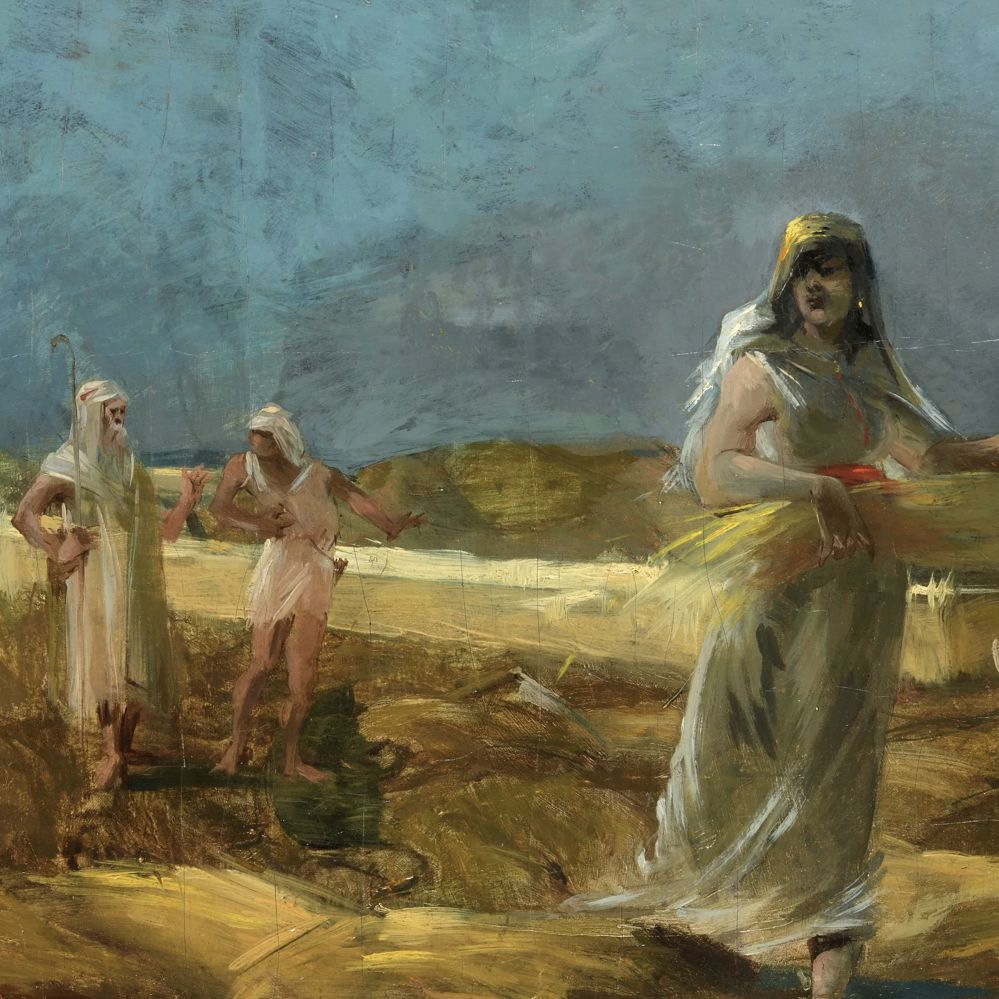
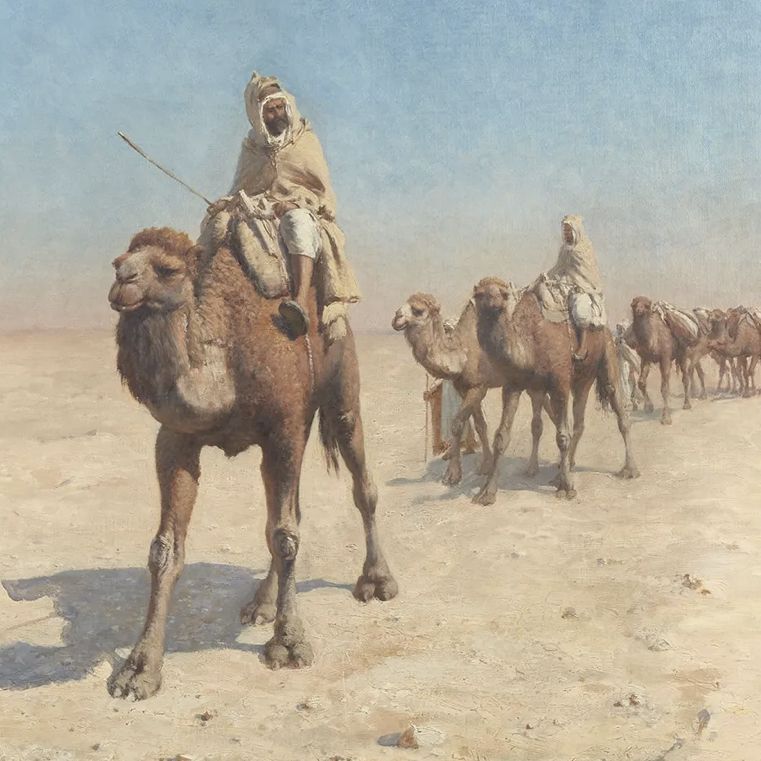
Focus on The Portrait of Emir Abd el-Kader
Le Portrait de l'Emir Abd el-Kader, signed by Hippolyte Lazerges, is distinguished by a remarkable intensity in capturing the subject's gaze and posture, a challenge that the artist meets with great technical mastery.
The figure of the prince, bathed in soft, slightly subdued light, takes on an almost sacred dimension, symbolizing both the dignity and resilience of a man emblematic of 19th-century Algeria.
The face, meticulously detailed, reveals great psychological depth, where fine features and skilfully placed shadows underline the Emir's inner drive, while allowing a form of indomitable serenity to shine through.
Lazerges goes beyond mere resemblance to capture the essence of her model's personality, thanks to her particular attention to light, which modifies the texture of skin and the shine of fabrics.
The drapery surrounding the Emir's face is rendered with a richness of appearance that seems almost tactile, and the soft colors and harmonies of tone emphasize the nobility of the individual, while enriching the composition with an intimate dimension.
The relatively restrained treatment of the background amplifies the impression of the subject's majestic solitude, his intense gaze seeming to escape beyond the frame, capturing both the strength of the figure and the silent reflection it provokes.
The construction of the image, faithful to academic rigor, is here transcended by the subtlety of an emotional rendering that makes this portrait much more than a simple representation: it is a true evocation of the greatness of a man and his era.
Hippolyte Lazerges' imprint on his period
Hippolyte Lazerges' imprint on his period can be seen in his art, which is deeply rooted in Orientalism, a dominant trend of the 19th century.
His works, marked by his stays in Algeria, subtly blend local influences with the academic canons to which he remains faithful. Through genre scenes and portraits, Lazerges delivers a unique vision of colonial Algeria.
His finely crafted canvases reflect a particular attention to light and the details of the Algerian setting, from arid landscapes to traditional costumes.
The artist doesn't just reproduce the stereotypes of the Orient; he manages to capture the soul of the place, with a sensibility that eludes mere decorative representation.
His portraits, in particular, go beyond the simple model: they reveal a certain psychology of the figures, an intimacy that lends his subjects a dignity rare in Western art of the time.
In this sense, Lazerges succeeds in establishing himself as a singular artist, capable of transforming Orientalism into a genuine aesthetic and human quest, where painting becomes a means of exploring the complex links between cultures.
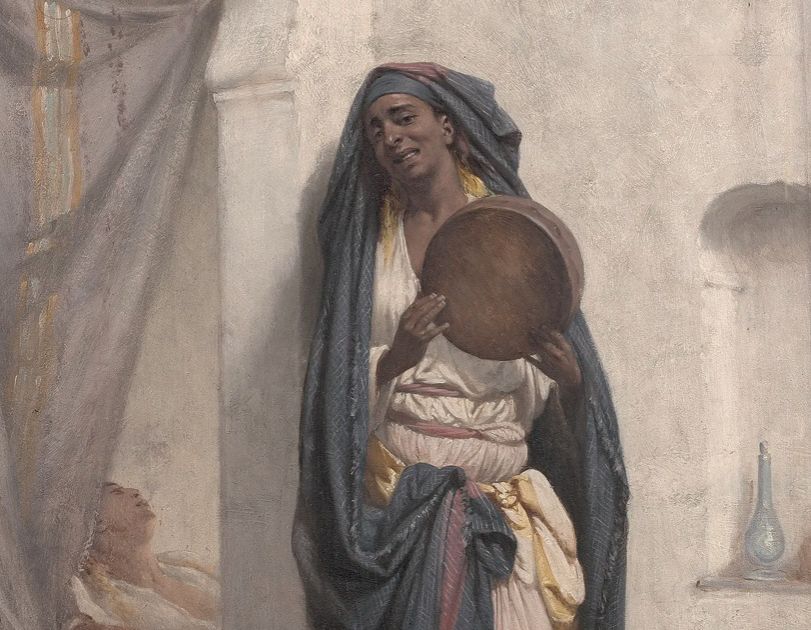
Hippolyte Lazerges' stylistic influences
Hippolyte Lazerges' stylistic influences are manifold and rooted in the spirit of his time, marked by orientalism and academic trends.
Initially trained under François Bouchot and David d'Angers, the artist adopted the classical approach, but was deeply attracted to representations of the Orient.
He drew his inspiration from landscapes and scenes of daily life in Algeria, a subject that was very popular with artists of the time.
His treatment of light and rendering of atmospheres can be compared with the work of Jean-Léon Gérômea master of orientalism whose precise, exotic scenes marked a generation.
But Lazerges, unlike Gérôme, sometimes leaves more room for the intimacy of his subjects, whether they are portrayed in portraits or more intimate scenes, in the manner of Eugène Delacroix who, despite having a freer approach to the Orient, also managed to distance himself from simple exotic representations.
With his sense of detail, texture and light, Lazerges is also part of an academic tradition that links him to artists such as Paul Delaroche and Adolphe-William Bouguereau.
However, his ability to capture the spirit of Algeria and capture the soul of the places he visited made him a privileged witness of his time, distilling a singularity rare in Orientalist painting, just like Henri Pontoy.
How to recognize the artist's signature
Hyppolite Lazerges' works are generally unsigned, but an inscription may appear on the frame or back of the canvas.
However, with or without a mention, it is important for you to have the work appraised to ensure its originality and to be able to date it.
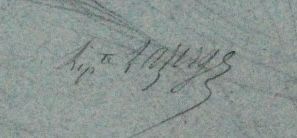
Knowing the value of a work
If you happen to own a painting by Lazerges or after the artist, don't hesitate to ask for a free estimate using the form on our website.
A member of our team of experts and certified auctioneers will contact you promptly to provide you with an estimate of the market value of your work, as well as any relevant information about it.
If you wish to sell your work of art, our specialists will also be on hand to help you sell it at the best possible price, taking into account market trends.
Response in less than 24h
Related topics
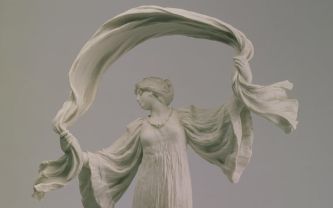
The value of works, sculptures by Agathon Léonard
Agathon Léonard, 19th century sculptor and bronzemaker, have a work by the artist appraised and valued in less than 24 hours.
Read more >
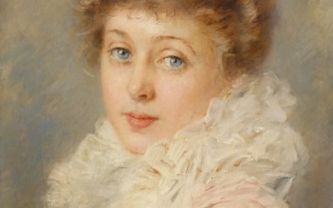
Cote et valeur 2024 des tableaux, dessins, peintures de Cons...
Constantin Makovskij is a 19th-century Russian realist artist who produced works that are highly valued at auction.
Read more >

Cote et valeur 2024 des sculptures, bronzes de Antonin Merci...
Antonin Mercié is a 19th-century neoclassical sculptor whose works are highly prized at auction.
Read more >
Secure site, anonymity preserved
State-approved auctioneer and expert
Free, certified estimates
